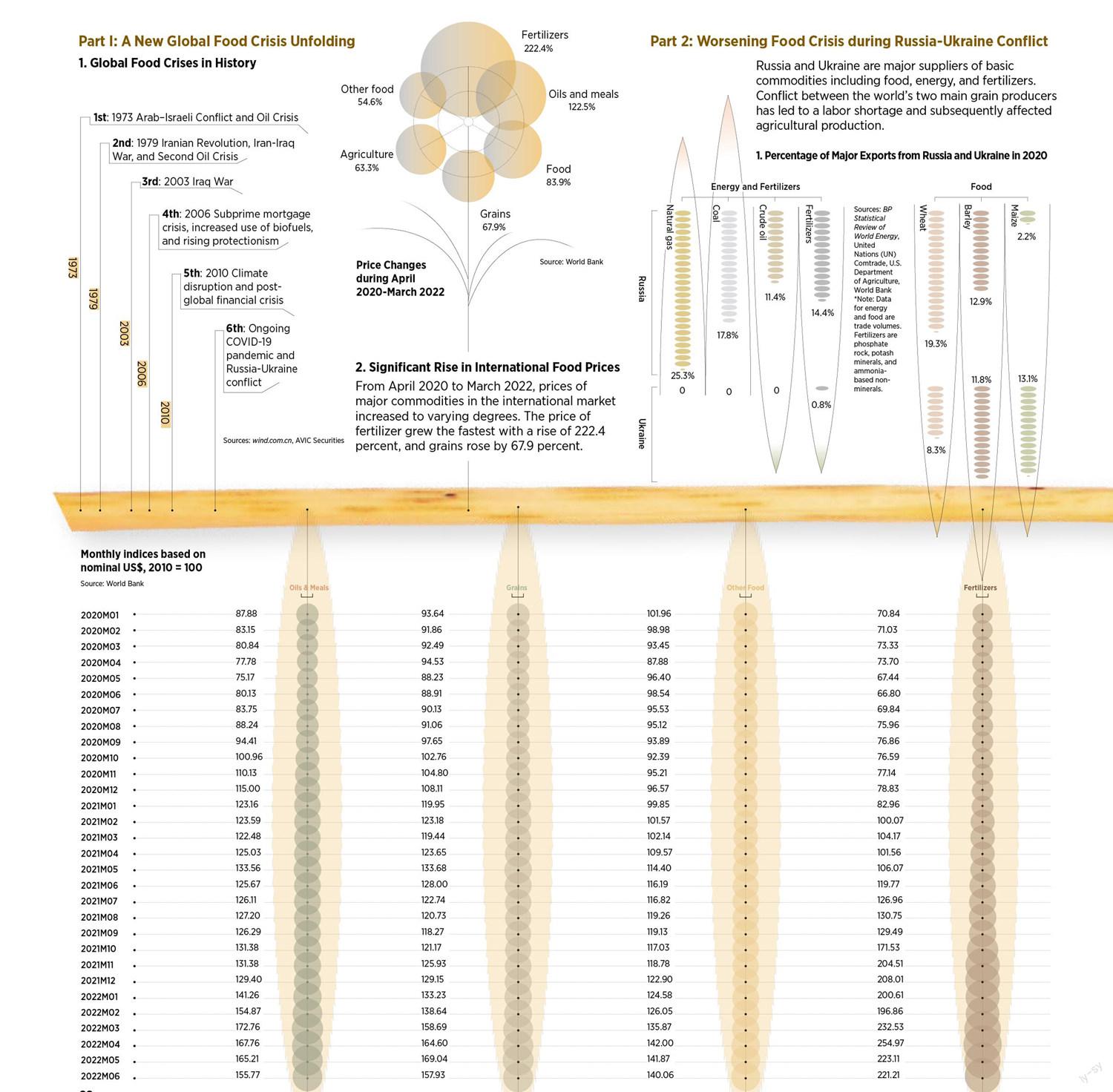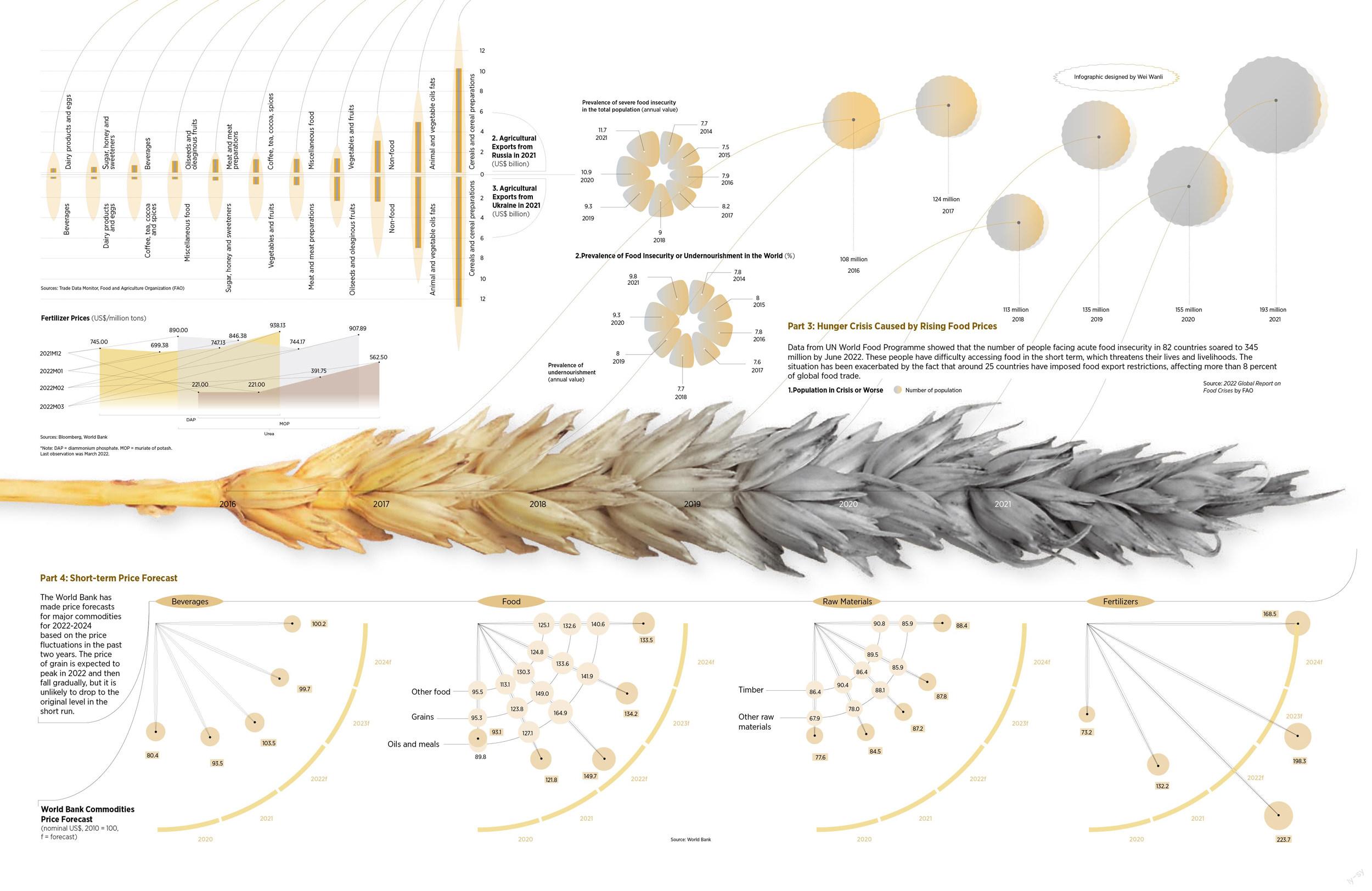Global Food Crisis in Numbers
2022-05-30GuoXixian,YuanYanan
Guo Xixian, Yuan Yanan


Food security is a major prerequisite for national security, anessential guarantee ofworld peace and development, and aneternal component of human survival. The outbreak of COVID-19, the escalation of the Russia-Ukraine conflict, and increasedextreme weather events have sparked a new global food crisis.With soaring international food prices and increasing numbersof people facing hunger, concerted efforts from the international community are urgently needed to cope with the ongoing crisis.
Part I: A New Global Food Crisis Unfolding
1. Global Food Crises in History
2. Significant Rise in International Food Prices
From April 2020 to March 2022, prices of major commodities in the international market increased to varying degrees. The price of fertilizer grew the fastest with a rise of 222.4 percent, and grains rose by 67.9 percent.
Part 2: Worsening Food Crisis during Russia-Ukraine Conflict
Russia and Ukraine are major suppliers of basic commodities including food, energy, and fertilizers. Conflict between the worlds two main grain producers has led to a labor shortage and subsequently affected agricultural production.
Part 3: Hunger Crisis Caused by Rising Food Prices
Data from UN World Food Programme showed that the number of people facing acute food insecurity in 82 countries soared to 345 million by June 2022. These people have difficulty accessing food in the short term, which threatens their lives and livelihoods. The situation has been exacerbated by the fact that around 25 countries have imposed food export restrictions, affecting more than 8 percent of global food trade.
Part 4: Short-term Price Forecast
The World Bank has made price forecasts for major commodities for 2022-2024 based on the price fluctuations in the past two years. The price of grain is expected to peak in 2022 and then fall gradually, but it is unlikely to drop to the original level in the short run.
